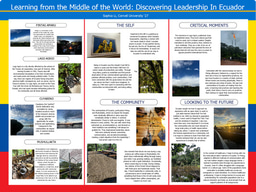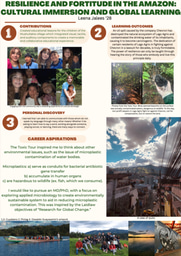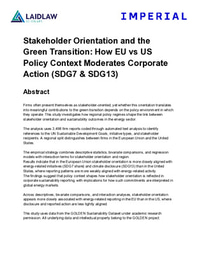Blackfriars Settlement: Leadership That Starts With Showing Up
Before this placement, I didn’t know what “leadership in action” would actually look like. I assumed it would involve doing something visibly impactful like running a project, or taking on a big responsibility. But what I found at Blackfriars Settlement was quieter, more grounded, and honestly, a lot more real than I expected.
Blackfriars is a 135-year-old community charity based in South London. They do everything from creative arts sessions and mental health groups to older people’s services and fundraising events. It’s the kind of place that does a lot with a little. And it works because the people behind it care deeply not just in a vague, feel-good way, but in a “we’ll stay late and fix it ourselves” kind of way.
What I Was Actually Doing
I spent most of my time supporting two projects: Gather and the upcoming November Supper Club fundraiser.
Gather is a sewing and craft programme open to everyone , it’s about giving people the chance to learn useful life skills in a low-pressure, welcoming space. Some come to stitch. Some come to chat. Some come just to sit in company. It’s a small room, but it carries a lot. My role was mostly behind the scenes: writing Instagram captions, helping build a comms plan in making the programme more visible to the wider community. It sounds simple, but trying to write in a voice that’s warm, non-patronising, and accessible is harder than it looks.
Later, I shifted to supporting the Supper Club , a fundraising event for potential corporate partners. I worked on the sponsor pack, presentation slides, and early-stage outreach. I also helped with the overall narrative. How do you explain what Blackfriars does in a way that clicks with someone who might never have stepped inside? How do you talk about impact when that impact looks like a sewing session, or a cup of tea in a choir room?
What I realised is that good communications work , especially in this sector is not about performance. It’s about clarity. It’s about care. It’s about knowing that your work, even if it’s “just” a caption or a deck slide, has a ripple effect. You might help someone find the confidence to come to a session for the first time. You might help secure funding that keeps a project running another year. That mindset made me take the work more seriously, and also made me want to do it better.
When I Got It Wrong
At the start, I didn’t get it right. I rushed through the onboarding process, skimmed emails, and made careless mistakes that could have been avoided if I had just slowed down. It wasn’t malicious , I was juggling exams and just wanted to get things sorted quickly. But I learned quickly that working with others means your actions don’t just reflect on you but others as well.
I started taking more time. Asking more questions. Not because someone told me to, but because I realised that’s part of being a reliable team member. Leadership, in this setting, often meant doing the small things well , the things no one really notices when they’re done right. It also meant to me, the importance of working with others, instead of always relying on oneself.
Who I Learned From
I have to mention Andrea. She’s the Head of Blackfriars Settlement and probably one of the hardest working people I’ve ever met. She handles funders, partnerships, the team, multiple events, and the unexpected things that come up every day and she does it all without making a fuss.
Watching her made me understand leadership in a new way. Not as a title or a role, but as a way of carrying responsibility without needing recognition. She made me want to do better, not because I felt pressure, but because I could see how much she cared and how much this place mattered to her.
What I’m Taking With Me
This placement didn’t give me a dramatic turning point or a big “aha” moment. But it gave me something more useful , it made me pay attention. It made me care about the details. It made me realise how leadership sometimes looks like showing up early, writing that extra email, or adjusting your tone to make someone feel seen.
It also reminded me that real impact doesn’t always look like a headline. Sometimes it looks like a community member coming back for a second sewing session. Sometimes it looks like a corporate contact replying “we’d love to support.” Sometimes it looks like work that no one claps for , but still gets done.
I’m proud of what I contributed. I’m grateful for the people who made space for me. And I’m leaving with a much better idea of the kind of leader I want to be , someone useful, someone thoughtful, and someone who shows up even when no one’s watching.





Please sign in
If you are a registered user on Laidlaw Scholars Network, please sign in